Late autumn really feels like one of the best times to explore the Mojave National Preserve. Cooler temperatures make hiking so much more comfortable, and the nights usually offer some of the clearest skies you’ll ever see for stargazing.
Summer’s heat? It can be brutal. Spring draws crowds for wildflowers, but autumn brings a quieter, calmer energy to the trails. I found the days mild enough for those long, rambling hikes, and the nights got just chilly enough to make a campfire and the stars overhead feel extra special.
When I visit in late autumn, I get wide open views without the summer crowds. The sunsets turn fiery as the desert cools down and the whole place feels like it’s winding down for the year.
That shift from fall to winter brings this perfect mix of pleasant weather and peaceful nights. I don’t think I could ask for more.
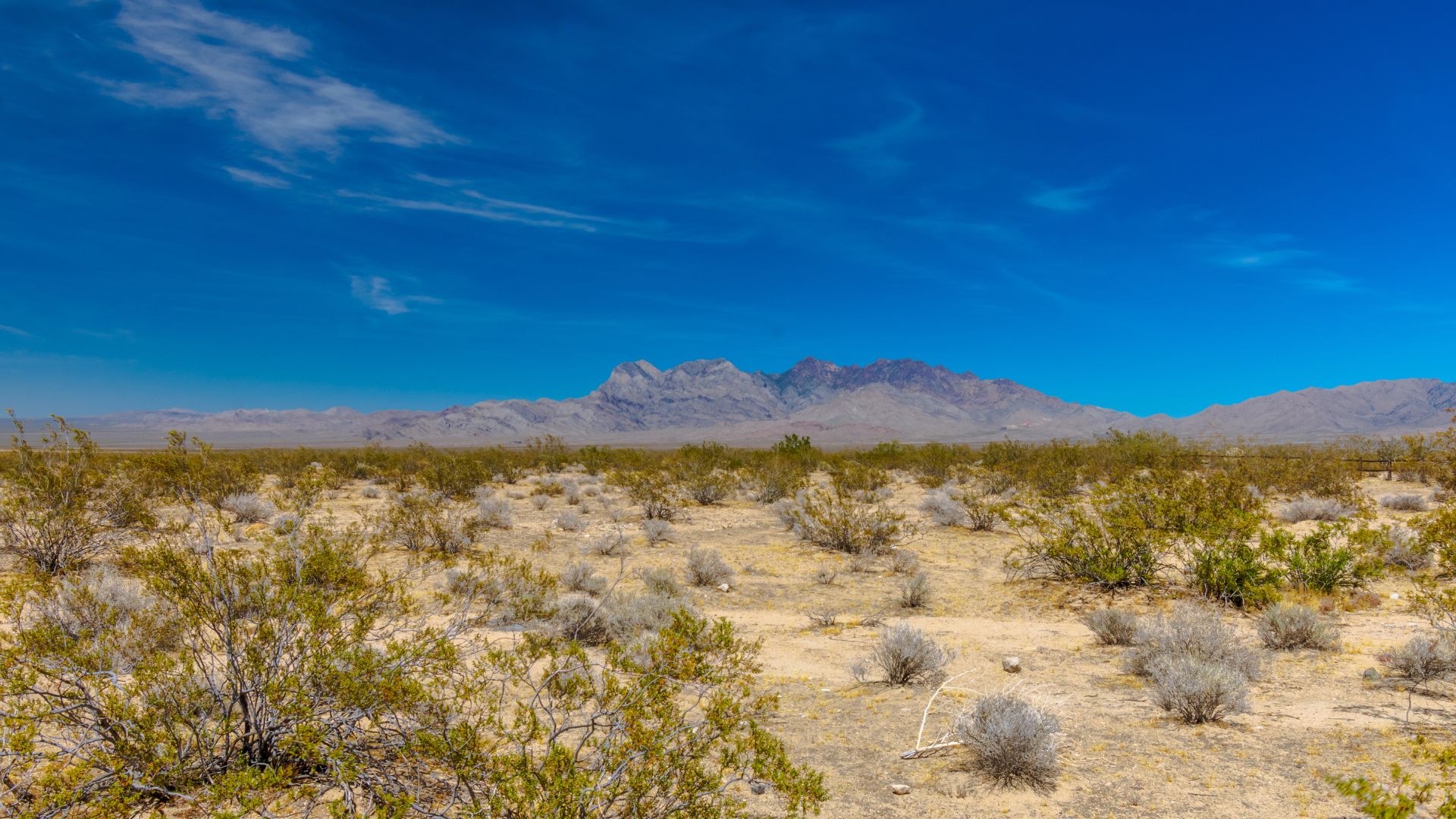
Why Late Autumn Is Ideal for the Mojave National Preserve
Late autumn really stands out for its comfortable temperatures, low humidity, and empty trails. This time of year gives hikers and stargazers a chance to enjoy the Mojave National Preserve without battling extreme weather or crowds.
Optimal Temperatures for Outdoor Activities
During late autumn, daytime temperatures in the Mojave National Preserve usually settle around 60–70°F (15–22°C). That’s pretty much perfect for hiking without worrying about heat exhaustion. Early mornings and evenings feel cool, but not icy.
The sun sits lower in the sky, so I can spend more hours outside without that harsh glare or the kind of heat that makes you want to hide. Sweat dries fast because the humidity drops, so I don’t end up sticky or uncomfortable on the trail.
Packing layers is easy, since the temperature can dip into the mid-40s °F at night. I love this kind of consistent, mild weather for long hikes or snapping photos. Less water loss means I can pack lighter and still stay safe.
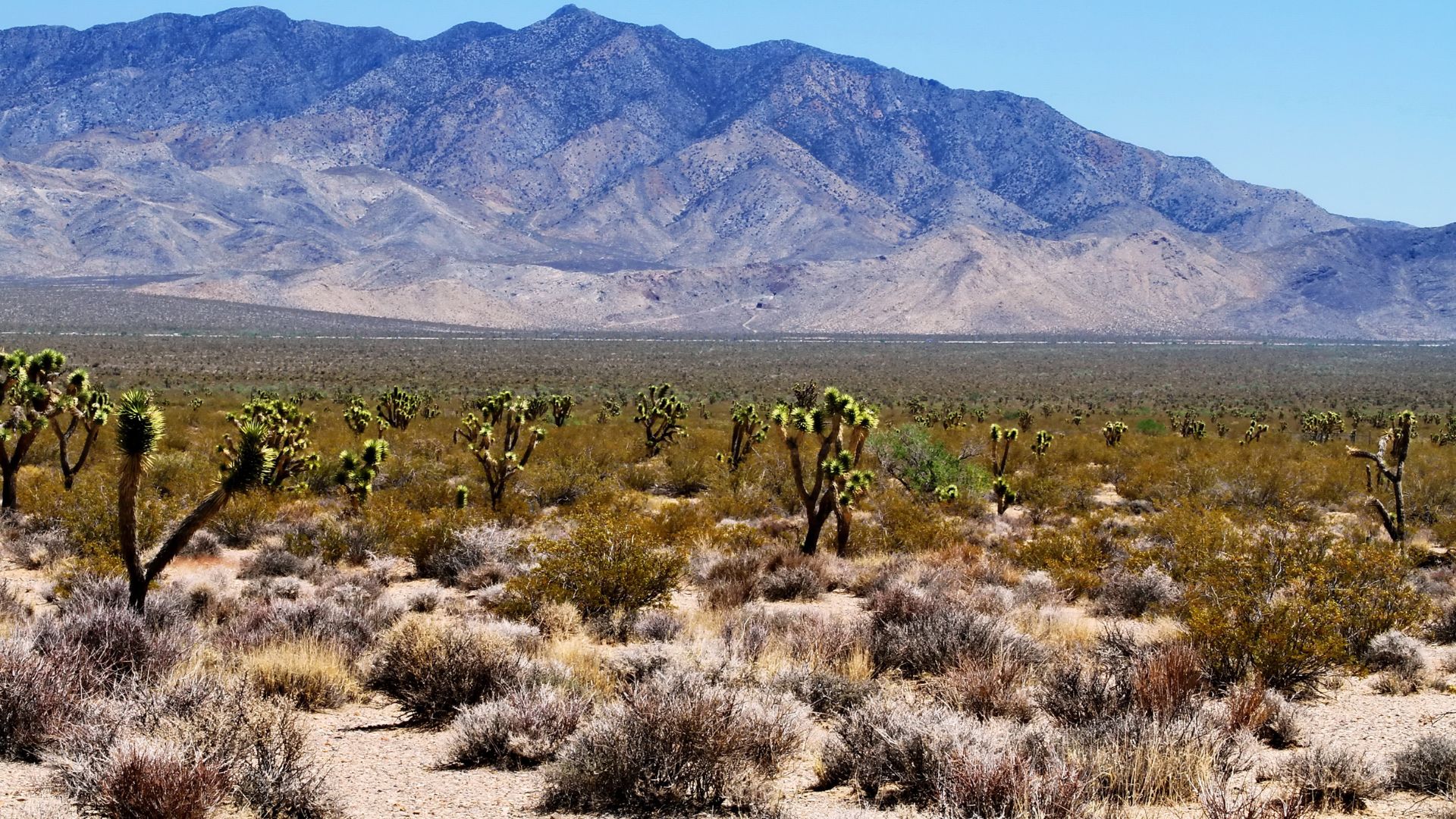
Climate and Weather Patterns in Late Fall
The desert climate shifts as autumn deepens. Winds sometimes pick up, especially on open plains, but storms and heavy rain almost never show up. Skies usually stay clear, which is perfect for those endless desert views.
Nights can dip toward freezing, but that’s pretty rare until winter really sets in. Historical weather data shows the Mojave National Preserve gets almost no rain from late October through November. Trails stay dry and easy to walk.
Thanks to the low humidity, I don’t have to fight off bugs or deal with sticky air. The cool, clean air just makes breathing feel better. And when the weather’s clear and dry, the stars pop out against the sky—especially on those moonless nights.
Comparing Late Fall to Spring and Winter Months
Spring brings wildflowers, sure, but it also brings unpredictable weather and bigger crowds. I’ve noticed late fall temperatures match spring’s, but there’s less pollen and fewer allergy triggers.
Winter, on the other hand, can get cold fast—sometimes even snowy up in higher elevations. If I hike then, I pile on the layers and keep an eye out for sudden cold snaps. The days shrink, so there’s less time for adventure.
Late autumn, though, hits that sweet spot—days are long enough for hiking, the weather’s pleasant, fewer people show up, and the patterns stay steady. That’s why I keep coming back this time of year.
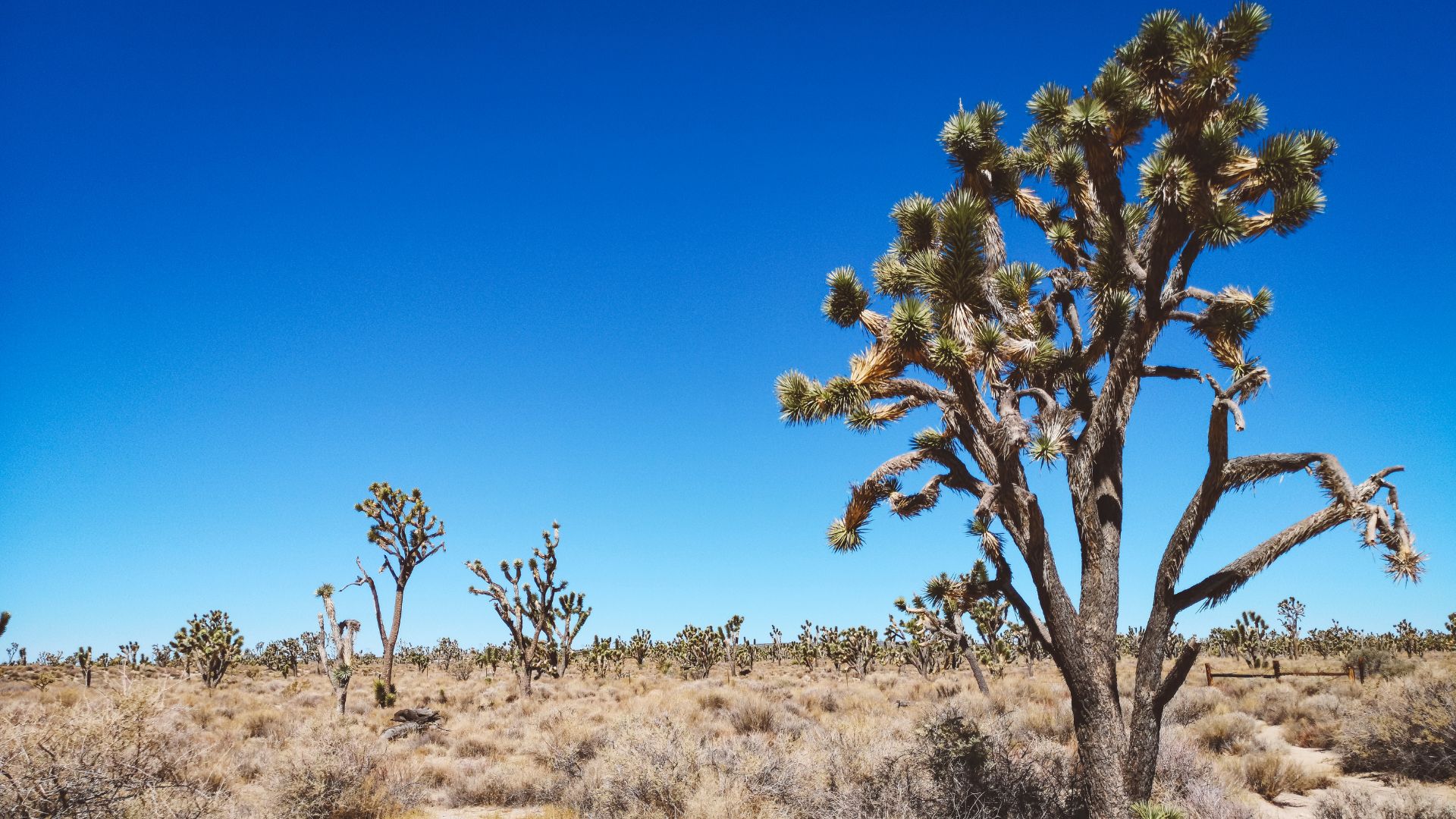
Ideal Hiking Conditions in Late Autumn
Late autumn brings cool, dry air and open, clear skies to the Mojave National Preserve. Daytime temperatures feel just right for hiking, and the low humidity plus rare rain make the trails even better.
The colder nights? They’re perfect for stargazing after sunset.
Best Hiking Trails and Their Unique Features
The Mojave National Preserve has a whole menu of hiking trails, each with its own personality. In autumn, the scenery shifts—golden grasses, crisp air, and fewer bugs make every step more enjoyable.
Here’s a quick table of popular trails and what makes them special:
| Trail Name | Unique Feature | Distance |
|---|---|---|
| Teutonia Peak Trail | Joshua tree forests, summit views | 3.5 miles |
| Kelso Dunes | Tall sand dunes, sunset colors | 3 miles |
| Hole-in-the-Wall Rings | Lava rock formations, metal ring aids | 1.5 miles |
Late autumn means quieter paths, bold scenery, and less direct heat—especially important on those exposed trails.
Recommended Routes: Teutonia Peak, Kelso Dunes, and Hole-in-the-Wall
My go-to hike in late autumn is Teutonia Peak Trail. The air feels just cool enough for climbing without overheating, and the Joshua trees look almost surreal against that deep blue sky. Once I reach the summit, the views stretch for miles—no summer haze in sight.
Kelso Dunes always calls to me as well. Hiking up the soft sand is way easier without the midday heat. As the sun drops lower, the dunes glow gold and orange. I never forget my camera for those sunsets.
Hole-in-the-Wall Rings Trail is short but has a ton of character. Metal rings help me climb through narrow volcanic canyons, and the rock formations paired with the cool air make it feel like a real adventure.
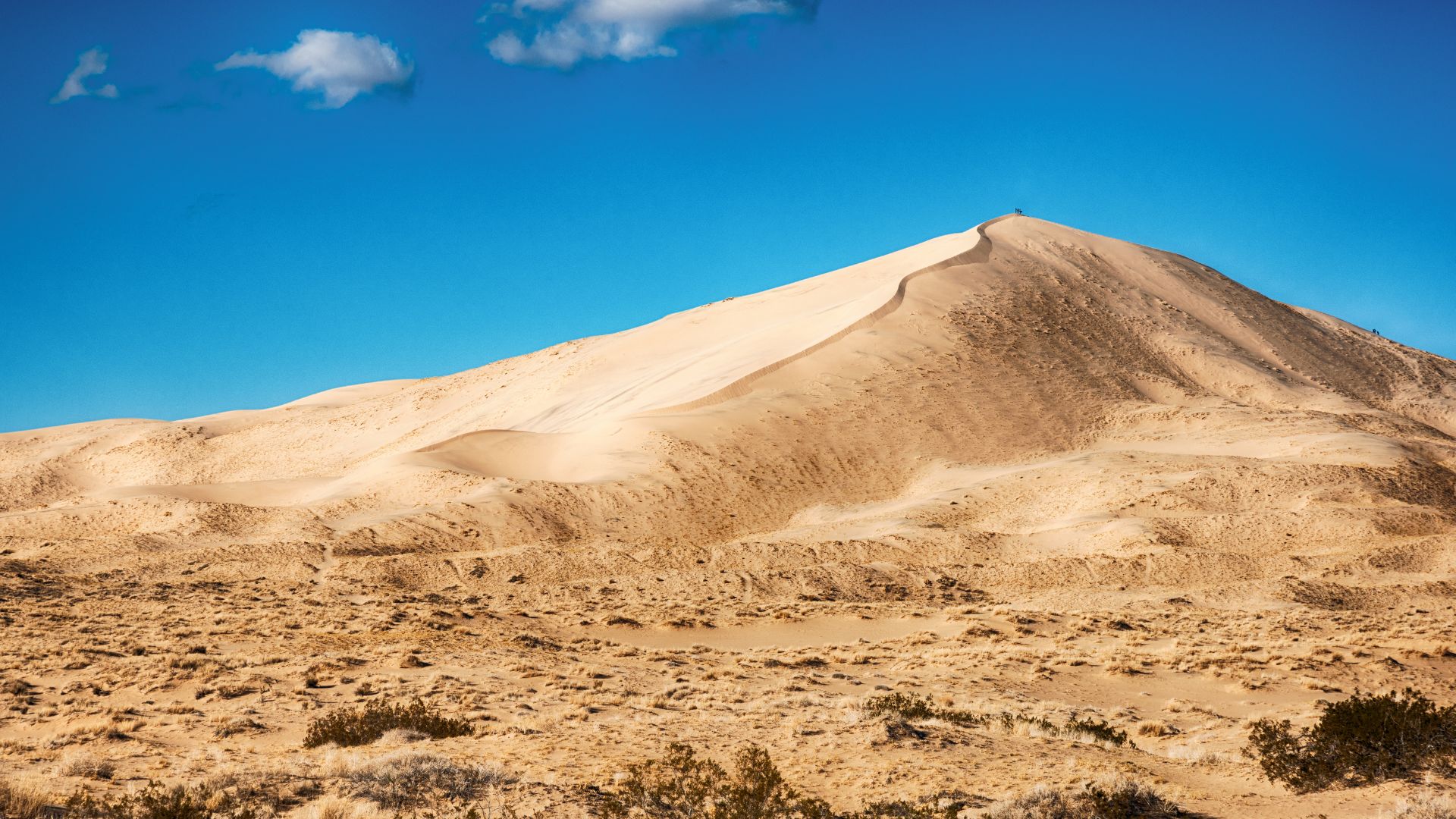
Safety Tips and Seasonal Hazards for Hikers
Even in late autumn, I never skip checking the weather before heading out. The Mojave usually stays dry, but the wind can surprise you, and rare rain sometimes happens.
I always bring layers—desert temps drop fast after sunset. Two liters of water per person is my minimum, even on cooler days. I pack extra snacks and a flashlight if I plan to stick around for stargazing.
Snakes aren’t as active now, but I still watch my step. Cell service is spotty at best, so I let someone know my plans and keep a paper map handy. Staying on marked trails is a must, especially as daylight fades.
The Magic of Mojave’s Starry Nights
Late autumn in the Mojave National Preserve brings crisp air and those pitch-dark skies that stargazers dream about. Star-filled nights, quiet landscapes, and cool temps create this atmosphere that’s just perfect for camping or lying back to watch the universe.
Night Sky Visibility and Stargazing Hotspots
Thanks to the Mojave’s remote location, light pollution barely exists. I can see thousands of stars, planets, and even the Milky Way without any fancy equipment. Late autumn air tends to be dry and steady, so the views are sharp and clear.
Kelso Dunes is my top pick for stargazing. The open sand stretches mean nothing blocks my view of the horizon. There’s something about lying on the cool sand at night, watching for meteor showers or tracing constellations, that feels like real desert magic.
Other good spots? The Granite Mountains and around Hole-in-the-Wall—both offer that same inky black sky. Amateur astronomers love the preserve for its visibility. It doesn’t have the official Dark Sky Park badge like Joshua Tree, but honestly, the night sky here rivals anywhere in California’s deserts.
I usually bring a star chart or use an app to help figure out what I’m looking at overhead.
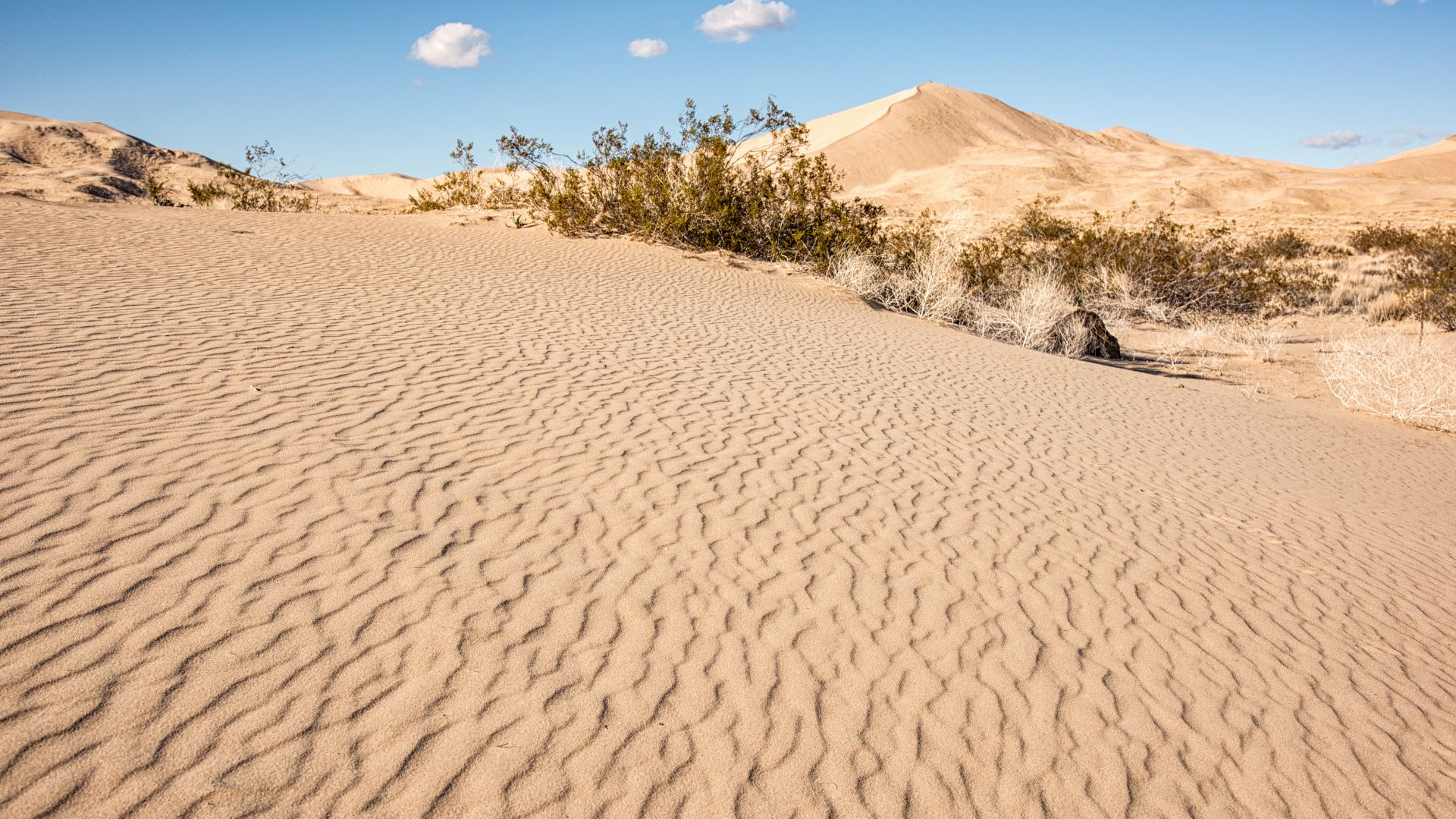
Camping Options for Nighttime Adventure
Spending the night inside the preserve lets me soak up the quiet and see the sky in true darkness. There are two main developed campgrounds—Hole-in-the-Wall and Mid Hills. Both have basics like tables and vault toilets, and both sit close to great stargazing spots.
If I want more solitude, dispersed camping is allowed. I pick a spot at least 200 yards from roads or water, away from other campers. That gives me privacy and an even better view of the stars.
The desert climate in late autumn is so much cooler than summer, which makes evenings and sleeping outdoors comfortable. Sometimes I’ll hike a short trail at night or just sit by the campfire, staring up. The mix of low temps, open space, and natural silence makes every night outdoors feel both peaceful and a little wild.
Even without a telescope, the Mojave puts on a show. The night sky is always the highlight of my fall visits.
Natural and Cultural Highlights in the Preserve
Mojave National Preserve blends fascinating landscapes, rare wildlife, and quirky historic sites. Mild late autumn weather makes it easier to explore the desert’s wild places and dig into its rich history.
Exploring Joshua Tree Forests and Wildlife
Walking among the Joshua trees always feels a bit magical. These tall, spiky trees thrive in the cooler autumn air and create sweeping, almost otherworldly views.
Wildlife gets more active during the day when the temperatures drop. I often spot red-tailed hawks or cactus wrens darting between branches. Sometimes I’ll catch a glimpse of bighorn sheep on rocky slopes or even a desert tortoise if the afternoon is warm enough.
Some years, I stumble across patches of late-blooming wildflowers along sandy washes. Fewer crowds in late autumn mean I get quiet moments for wildlife viewing and bird watching. Binoculars and a camera are always in my pack.
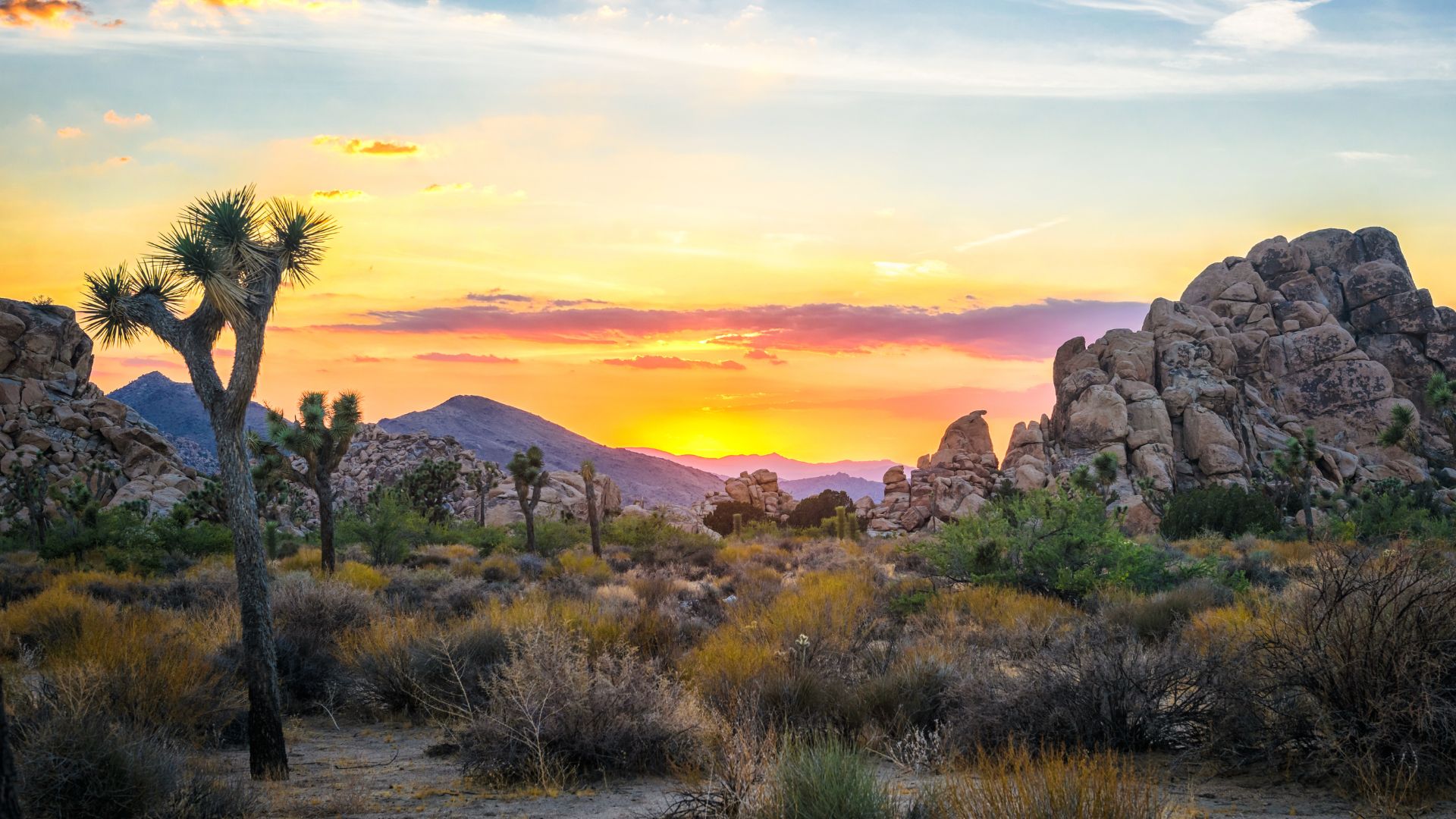
Unique Landmarks: Lava Tube, Granite Mountain, and Zzyzx
The Mojave’s geology is just wild. Lava Tube is a must—an underground cavern formed by ancient volcanoes. When sunlight streams through cracks overhead, the whole place glows for a few minutes. It’s a photographer’s dream.
Granite Mountain offers a rugged hike with panoramic views. The rocks hide small lizards and sometimes bighorn sheep. The trail gets steep in places, but cool weather makes it manageable.
Zzyzx is a bit of a curiosity. It started as a health resort and now serves as a research center. I like wandering its paths and reading signs about the area’s strange history and desert springs.
Visiting these spots always reminds me how ancient and weirdly wonderful this desert can be.
Visiting Cultural Sites and Learning History
The Mojave has a long human history, and you can see it everywhere. At Kelso Depot, I walk through exhibits about the old railroad station and how it changed the region. Sometimes, near rocks or canyons, I spot petroglyphs left by Indigenous people centuries ago.
Exploring abandoned mines or early homesteads, I get a sense of just how tough life was out here. Reading about the folks who once lived at Zzyzx or ranched nearby adds another layer to the landscape.
Most of these cultural sites are easy to reach by short hikes or scenic drives. Every stop teaches me something new about how people and nature shaped the Mojave.

Planning Your Visit: Essential Services and Accessibility
Traveling in the Mojave National Preserve takes a bit of advance planning. Amenities are few and far between, and the area is huge. Knowing where to find visitor centers, current info, and the best entry points makes all the difference for a safe trip.
Visitor Centers and National Park Service Resources
I always start at the Kelso Depot Visitor Center. This restored train depot acts as the main hub for the preserve. Inside, I find maps, exhibits on local history, and staff who know what’s going on that day. There are restrooms, water fountains, and some shade if I need a break.
The Hole-in-the-Wall Information Center is another good stop. It’s smaller and not always open, but it’s handy if I’m heading toward the eastern side. There aren’t any gas stations or restaurants inside the preserve, so I rely on these visitor centers for information, trail updates, and weather warnings.
The National Park Service posts safety bulletins at entrance kiosks and online, so I always check those before heading out.
Key Access Roads and Travel from Las Vegas
Getting to the Mojave National Preserve from Las Vegas usually takes about 90 minutes if you’re driving. I like to jump on I-15 south, then hop off onto Cima Road or Kelbaker Road.
Both of these roads take you straight into the preserve’s wild heart, right in southeastern California. You’ll cross parts of San Bernardino County along the way.
Here’s something I’ve learned the hard way: make sure you fill up your gas tank before you go. There aren’t any gas stations inside the preserve, and your phone might not get much signal out there.
The main roads are easy to follow—well-marked and paved. But some side roads? They’re just gravel or even soft sand, so not every car will handle them well.
Before heading out, I always double-check the road conditions on the National Park Service website. It’s just a simple step, but it keeps the adventure safe and smooth.

